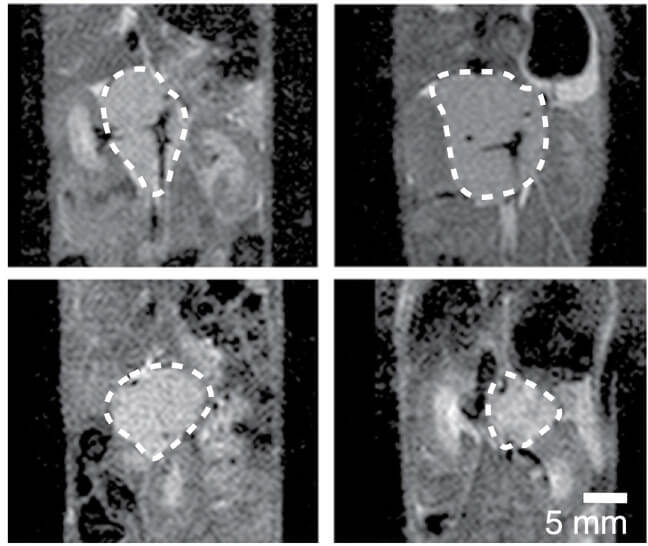The institute's scientists located a molecule that irreversibly attaches to a protein that contributes to the development of malignant tumors. Their findings may lead to the creation of a new cancer drug

Most drugs, from paracetamol to cancer drugs, are based on molecules that move through the body, bind to proteins and help prevent or fight diseases. However, the connections between the molecules that are introduced into the body and between the proteins last for short periods of time, so their effectiveness may be limited. The laboratory of Dr Near London, from the Department of Structural and Chemical Biology at the Weizmann Institute of Science, specializes in the detection of molecules of a special type - those that bind to proteins throughout their lifetime, lasting from a few hours to a few days. This irreversible adhesion may strengthen the effect of the molecule.
בNew research, the researchers from Dr. London's laboratory focused on a protein known as Pin1, which has been known for years to play a role in the development of various types of cancer. Researchers have previously shown that if the creation of the protein is genetically inhibited, it is possible to prevent cancerous tumors. However, attempts to find molecules that are able to bind to the protein and disrupt its activity - and from which it is possible to create a drug - have not been successful. One of the reasons for this is that Pin1 has evolved so that it binds easily to other proteins, and is therefore characterized by a smooth and flat surface, which makes it difficult for drugs to attach to it.

The researchers hypothesized that if they found a molecule that would bind to Pin1 irreversibly and disrupt its activity, it might prevent it from supporting the disease in two ways: it would not encourage other proteins that accelerate the tumor and it would not inhibit proteins that are able to fight cancer. Prof. Nathaniel Gray from the Dana Farber Cancer Research Institute in Boston and Prof. Kun Ping Lu from Harvard University Medical School also participated in the study.
To find the appropriate molecule, hundreds of potential candidates were scanned until those capable of binding to the protein were found. From the group of suitable molecules, the researchers were able to identify one that turned out to be particularly good. The indicators for this are the ability of the molecule to bind effectively to the target protein, but without disrupting the activity of other proteins in a way that could be toxic to the body.
In the long search for the molecules, the researchers were helped by methods that make it possible to follow, in the laboratory and in living cells, the irreversible microscopic connections between the molecules and proteins and to test their function in different situations. Upon finding the most effective molecule, the name Sulfopin was affixed to it - a cross between Sulfolane - the name of a chemical group that was discovered in some of the molecules bound to Pin1 - and the name of the protein itself.
Later, the researchers conducted experiments that focused on two types of cancer that Pin1 is known to contribute to their development: brain cancer of a type that is mostly common in children and pancreatic cancer. Initially, the experiments were conducted on cells in the laboratory, and it was discovered that the effect of the molecule is relatively small in the first few days, but after about a week its effect accumulates and increases - and it manages to significantly delay the rate of cell division. Later, experiments were conducted using a cancer model in mice and fish, and it became clear that thanks to the molecule's effect on Pin1 and other proteins it activates, the development of tumors in these animals was significantly inhibited, and they survived longer.
In order to promote the possibility of translating the scientific findings to the clinic, the company registered "ידע", an arm of the intellectual property commercialization of the institute's scientists, a patent on the molecule that is already generating interest among biotech companies that are considering investing in preclinical research. However, it is important to note that the road to the hospital bed is still long: on average, it takes more than a decade of research and development work and an investment of 2-1 billion dollars - with very small chances of success - to reach, perhaps, the desired goal: creating a new drug for cancer.
Researchers from the London Cancer Research Center, Saarland University in Germany, Portland University of Health and Science, Peking University in Beijing, Mount Sinai Hospital in New York, Boston Children's Hospital and Stanford University participated in the study. The research was led by Dr. Christian Dubiala, a postdoctoral researcher from Dr. London's lab, and Dr. Benica Finch, a research student in Prof. Gray's lab.
More of the topic in Hayadan:
- Against four cells - why is there currently no effective drug for the treatment of glioblastoma brain cancer?
- An open source approach to the fight against brain cancer
- A new immunotherapy helps the cells of the immune system locate the deadly glioblastoma brain cancer cells and eliminate them
- A new consortium with the participation of the Technion will develop a personalized vaccine for brain cancer patients
